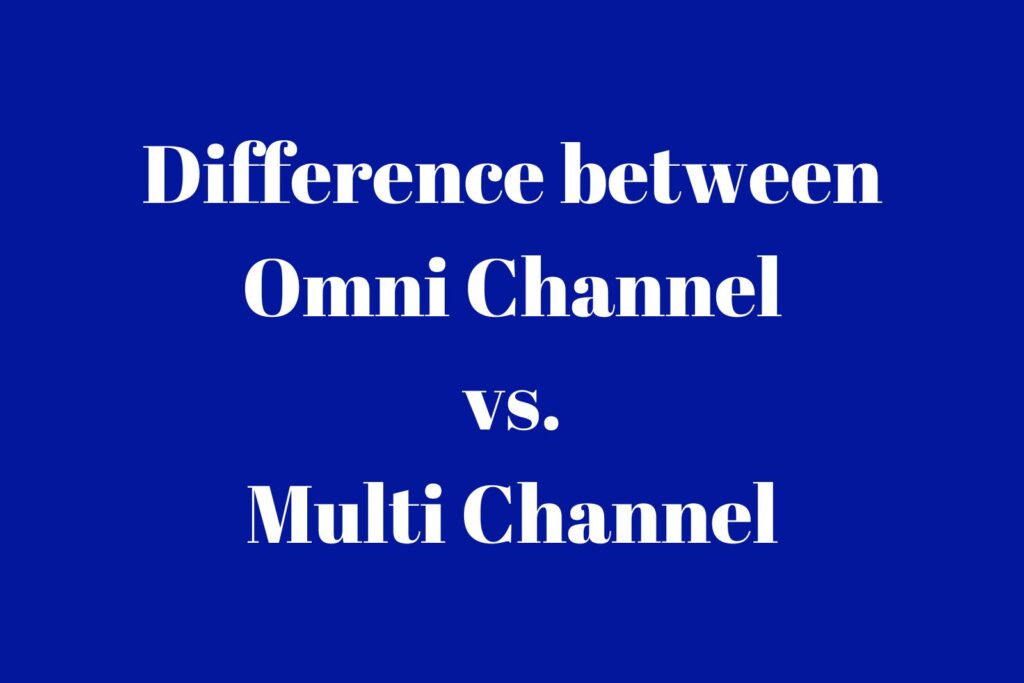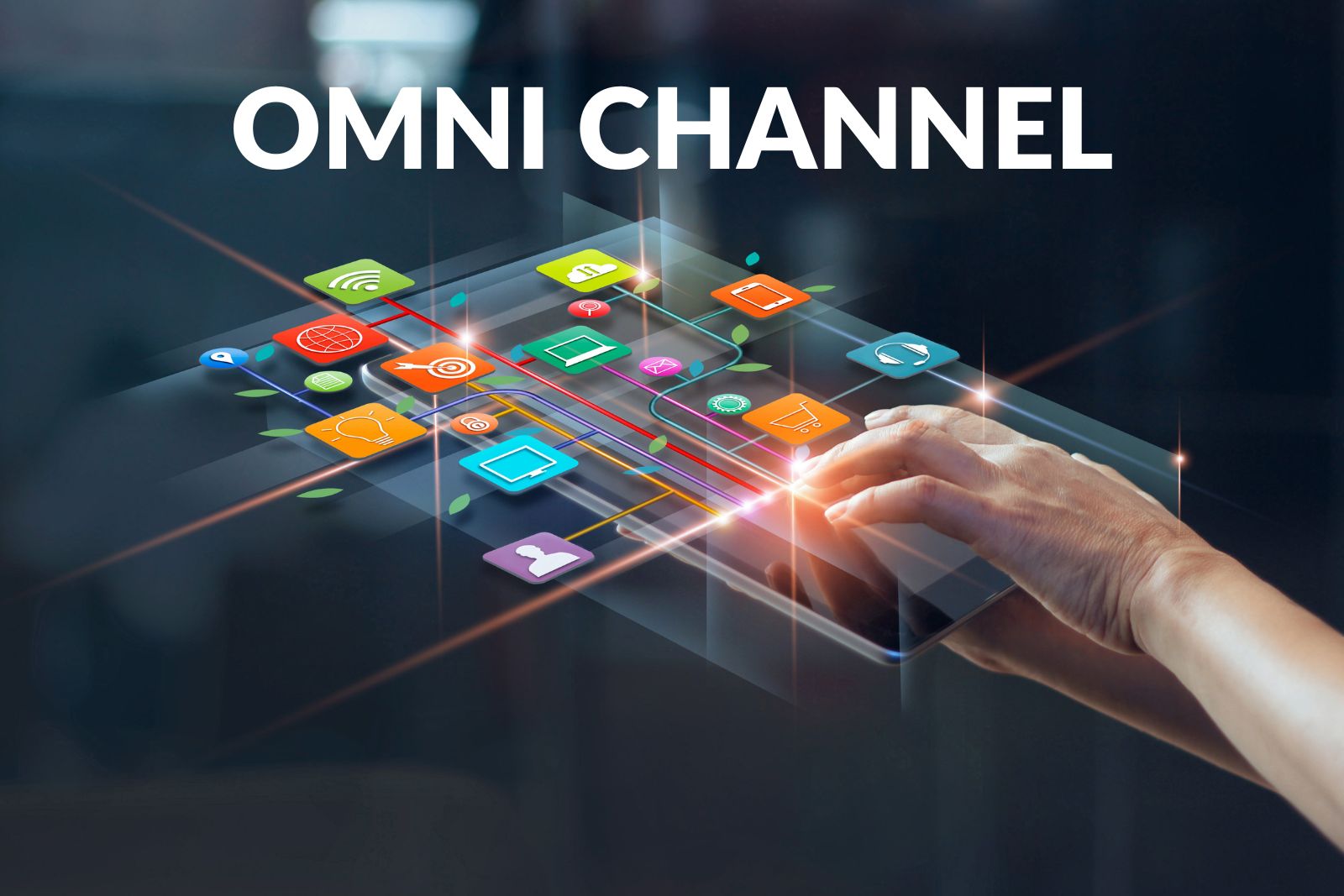Omni channel, also spelled omnichannel, is a marketing strategy that aims to level out the playing field for a company by presenting their products, services and special offers on all channels and devices.
By going omni-channel one can reach more people with their brand recognition and capture more leads for themselves.
Technology is advancing so quickly, we can hardly keep up. Lives are focusing more and more on our online activities rather than what we’re doing in the real world.
People may use social media or associate with friends on Twitter while at work, updating their status through Facebook while they’re studying at school, or reply to emails that have been piling up on their phone when they’re out playing sports or meeting friends in the pub.
As people shift their views of the internet from purely a place for business to an integral part of everyday life, it would be wrong for us marketers, salespeople and customer support reps not to adjust our thinking with them.
It’s important that we don’t keep dividing the experience into different channels like a desktop experience, mobile experience etc.
But, instead present customers with just one holistic approach, an omni channel, which caters to every channel – because that’s how customers want it now.
Advantages of Omni Channel
Instead of only offering support on its desktop website, for example, a company would offer support through Facebook Messenger, live chat, email, and phone.
Some benefits you could experience through an omni-channel approach include customer loyalty and retention and increased sales due to your customer having full trust in the product before they even buy it.
1) Greater reach: With an omni-channel retail, marketing, or service strategy in place, you’ll be reaching your customers where they are. They no longer have to search and search to find you. No matter where they are, your team or your products will be only a click, an email, a direct message, or a phone call away.
2) Increased profits: If and when your prospects are ready to buy, they’ll find it much easier to make a purchase if they can shop from multiple online stores and Web-based retail sites that sell the same product – why?
Because this way they don’t feel like they’re missing out on anything. Further, being able to shop across multiple channels also ensures it’s easier for them to purchase from you again or renew their subscriptions, securing recurring revenue.
Likewise, it makes re-orders simple and easy (and saves you time).
3) Boosted customer satisfaction: It’s important that your customers feel like they have several ways of communicating with you or purchasing your product.
It will be better if their experience when contacting your customer support or purchasing decisions doesn’t differ based on the device they’re using.
An omnichannel approach is key to running a successful company, as it is critical for ensuring customer satisfaction and retention.
The omni-channel experience is marketing, selling, and providing a service to customers irrespective of the media or device via which they reach out or interact with a brand. The customer experience should be consistent across channels and consistently effective irrespective of how customers choose to get in touch.
Omni-Channel vs. Multi-Channel
The customer can access a variety of communication options in a multi-channel environment that are not necessarily connected.
However, in omni-channel, there are not only multiple channels available, but the channels are connected to each other so you can move between them seamlessly.

While all omni-channel experiences will employ the use of multiple channels, not all multi-channel experiences are omni-channel.
You could have incredible mobile marketing, highly engaging social media campaigns, and a well-designed and performing website.
But if they don’t work together in synchronization, they don’t create an omni-channel experience for customers.
While a multi-channel includes two or three channels, an omni-channel is inclusive of all channels, platforms and devices.
Businesses are often using social media to engage and interact with customers/audiences but aren’t as successful because the multiplicity of channels disperses their effort in a way that doesn’t communicate a presence that is cohesive and consistent from one platform to the next.
Today’s consumer is continuously on the lookout for shortcuts that make their lives simpler.
They don’t want to wait in line during checkout, or be forced to strain their eyes and fingers squinting at tiny text on a smartphone screen.
Instead, they’re looking for services that save them time and aggravation. Giving your customers a seamless experience across all channels of interaction will help drive purchases.
Omni-channel strategies – those which provide consumers a seamless experience accompanied by specialized value added services and capabilities – are increasingly important for businesses today.
How to Build an Omni Channel Marketing Campaign
An omni-channel marketing strategy enhances a brand’s message, positioning, and consistency across all of the same channels and platforms including computers, smartphones, tablets, televisions, etc.
And because an omni-channel marketing strategy can be utilized for sales or service initiatives as well as for advertising and promotion initiatives, this type of marketing increases a company’s brand purchase decision influencers by elevating their image from one of a stand-alone business to that of a mainstay household name.
- Start with the basics: Your website and social media channels: Nailing down your omni-channel experience may take time, but it’s important to remember that you don’t need to do it all at once! It’s a good idea to start off with your website. After that, focus on your social media channels. Then, slowly work on moving other platforms into the mix. Make sure that you’re consistently posting and engaging with users from each channel in order to maintain consistency across your online presence. For example, you may want to focus on Instagram for images and
Facebook for video content or vice versa – whatever works best for the type of business your company is! And as always – make sure you’re answering any messages or comments users may leave behind on each platform so as not to seem unprofessional or inconsistent by failing to reply.
- Create an app if needed: Consider creating an app if you sell consumer products as per requirement. The need for an app depends upon your industry and the product that you deal in.
- Ensure Customer Assistance: When you expand your organization’s communication beyond the borders of one channel, do it to solve for customers at every stage of your strategy. It’s not just about gaining more visibility or making more sales — although those are tangible results you can expect if your multi-channel approach pays off in the form of a better customer experience. The bottom line is: when you build across multiple channels, your goal should be focused on enhancing customer satisfaction. You want to make sure that each channel perfectly
complements all the others in an effort to create a seamless experience for your audience.
- Beware of using boilerplate content: Create a consistent experience by using the same messaging across channels. For example, if you’re running an ad on various social media platforms like Facebook or Instagram, you’ll want it to look and read the same. However, you might want to change up your wording just enough that it’s unique and catchy! You should write in a way that is similar but different enough that it sets you apart from others in the industry who may be sending out generic messages that can oftentimes lead to being penalized by search
engines and social media platforms. The last thing you will want to do is create a boring image of those reading your content while they are expecting something intriguing.
- Give customers a device- and platform-appropriate CTA: When engaging with your customers via social media platforms such as Facebook, Twitter or Instagram for example, click-through rates are of the utmost importance. That’s why you should always remember that once a conversation has finished on say Messenger for example, it should be surprisingly closed with a Spark to ensure seamless transitions from point A to B. It is necessary to either schedule a meeting or promote your mobile app through the click-through CTA in order to drive additional downloads and sales specific stats on a case by case basis.
Few great examples of these are:
Amazon: Amazon is the king of the omni-channel experience in the consumer retail space and it goes beyond just “clicking to ship” for most people. Its novel concept has revolutionized today’s market by giving its customers an option to choose whatever platform works best for them from their computer, tablet, or smartphone. While this might sound like a small thing to some, it is quite impressive as a new player in the space because not many other retail giants have gotten this right just yet.
Pepperfry: Pepperfry is an online e-commerce company that sells furniture, home décor and more. It was founded by two friends who wanted to ensure customers had full control over their shopping experience. For example, shoppers on Pepperfry’s website can view all available products and place an order, but they can also visit a “Studio Pepperfry” to shop in person, talk with representatives that can assist during the decision process, or test how a product will fit into their home before purchasing it. The company accomplishes this goal by pairing its website with brick-and-mortar retail spaces.
Starbucks: Omni-channel makes shopping with Starbucks so easy, which is why we all love to do, it! And here’s why I love the Starbucks rewards app so much. First, there’s no need to worry about losing your card because you can reload your card and check the balance on your phone (whether it’s in your hand or back at home on your computer). You can also adjust things like how you want to earn rewards and select what items show up for regular order suggestions.
Sephora: The beauty giant Sephora has created an omni-channel experience that allows its shoppers to create beauty bag accounts. Customers can then take the digitized bag into their local store and locate the products they want to purchase by either browsing through thousands of in-store items or scanning the barcode using their mobile device’s camera. If they like a product, they can add it to a wish list, pay for items in the account and grab them at checkout.
Google Chrome: Google offers an example for creating a successful omni-channel experience. For years, the company has offered its users a seamless way to view history and activity within its Chrome browser, even if they’re logged into their account via a laptop on-the-go or through their phone’s browser. By serving users a more streamlined experience, Google is able to hold the majority of market share (above 65%) in the industry of internet browsers.
Creating an Omni Channel Experience is the Key to Future Success
Every company must develop its own unique omni-channel experience infrastructure, and you’ll need to work closely with several departments in your company to develop this strong strategy.
Product, Marketing, Sales, Customer Support and Customer Success are the things that you must focus upon.
Once everyone on the team understands the goals and objectives of your omni-channel venture, you can develop a transition plan which will allow you to smoothly make this transition over time.
This is usually done through a rollout that gets the department heads involved early on so they can envision all of what it takes to get the manpower to pull off such a task.
Doing so means that when the time comes, it won’t be as difficult attempting your transition because everyone is
backing you up — including those who came before and inspired you to attempt such a feat.


